New Image Generation Transforms Business Strategy and Creative Intelligence
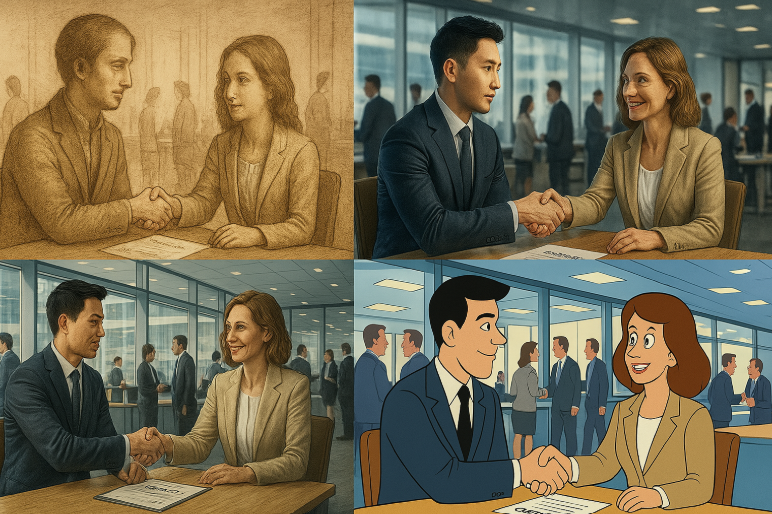
In the rapidly evolving landscape of artificial intelligence, OpenAI’s integration of advanced image generation capabilities into GPT-4o represents yet another watershed moment. This technological breakthrough transforms visual creation from a specialized skill to a universal business capability, fundamentally altering how organizations communicate, innovate, and compete in the digital economy.
The Creative Intelligence Revolution
The introduction of image generation directly within GPT-4o marks a pivotal shift in the democratization of visual creativity. What makes this development particularly significant isn’t merely the quality of its outputs, but how it places sophisticated visual creation tools in the hands of everyday business users.
“It gives a level of creative quality and control to the masses. Previously, this was only available to power users with more convoluted set-ups and workflows,” notes Wesley ter Haar, Co-founder & Chief AI Officer at Media.Monks. This accessibility fundamentally transforms the creative landscape, enabling organizations of all sizes to produce professional-quality visuals without specialized technical expertise.
The technology doesn’t just accelerate existing processes—it reimagines them entirely. Craig Elimeliah, Chief Creative Officer at Code and Theory, captures this paradigm shift perfectly: “The distance between an idea and a fully formed visual is now seconds, not days, and that changes the whole psychology of creativity. You can now think with your eyes.”
The Technical Breakthrough Driving Business Transformation
What sets GPT-4o’s image generation capabilities apart from previous models is its underlying architecture. Unlike most image generators that rely on diffusion models, GPT-4o employs an autoregressive method, generating images sequentially. This technical approach enables unprecedented precision in rendering complex scenes with 15-20 distinct objects, far surpassing previous models that struggled with 5-8 items.
“It’s a huge leap in text generation, and the best AI image generation model I’ve seen,” states Allie K. Miller, Independent AI Consultant and former leader at Amazon and IBM. This leap in capability stems from GPT-4o’s ability to accurately render text within images—a notorious challenge for previous generators that opens new applications in diagram creation, information visualization, and multi-panel storytelling.
For technical leaders, this represents more than an incremental improvement. The autoregressive approach fundamentally changes what’s possible, particularly for applications requiring precision and consistency across multiple visual assets, from product documentation to technical diagrams to educational materials.
The Financial Case: From Cost Center to Strategic Investment
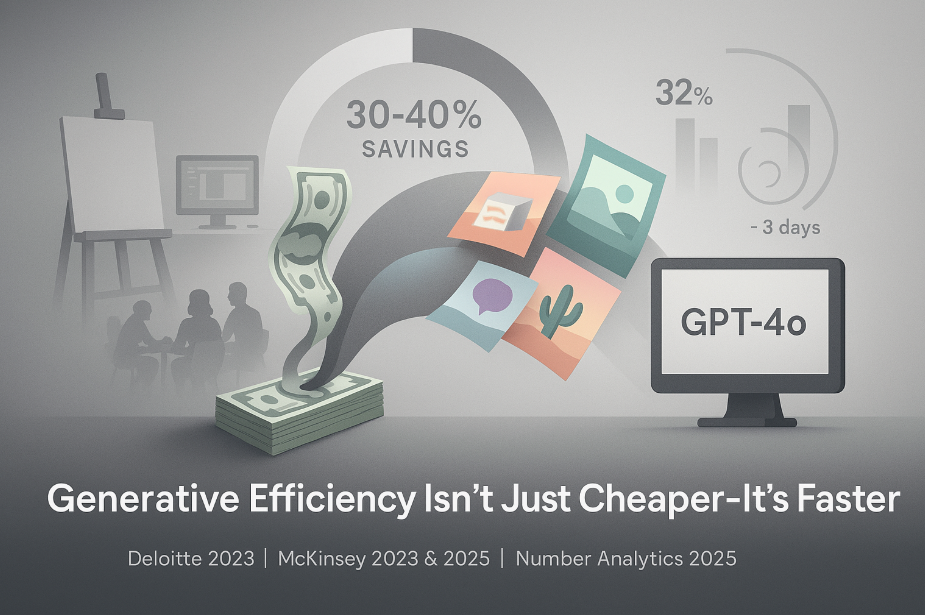
For CFOs and financial leaders, GPT-4o’s image generation capabilities translate directly to measurable business value across multiple dimensions. The most immediate financial impact comes from production cost reduction—eliminating or significantly reducing expenses related to specialized design software, stock image subscriptions, and external creative agencies.
For a mid-sized enterprise, conservative estimates suggest potential cost savings of 30-40% on visual content production. This aligns with Deloitte’s Digital Transformation Survey (2023), which found organizations implementing AI content tools report “average cost reductions of 32%” across their content production workflows (Number Analytics, 2025). Additionally, McKinsey research indicates that generative AI could contribute up to $4.4 trillion in annual global productivity, with marketing productivity alone potentially increasing between 5-15%, worth approximately $463 billion annually (McKinsey, 2023).
A common oversight in financial analysis is focusing solely on direct cost savings while neglecting the opportunity cost of delayed visual iteration. GPT-4o enables businesses to compress months of visual testing into days, potentially accelerating time-to-market and revenue realization. This acceleration is particularly valuable in competitive markets where speed-to-market directly impacts revenue potential. According to McKinsey’s State of AI report, organizations that redesign workflows as they deploy generative AI see the most significant bottom-line impact from their AI investments (McKinsey, 2025).
This acceleration creates particular value in these key business areas:
Marketing Transformation
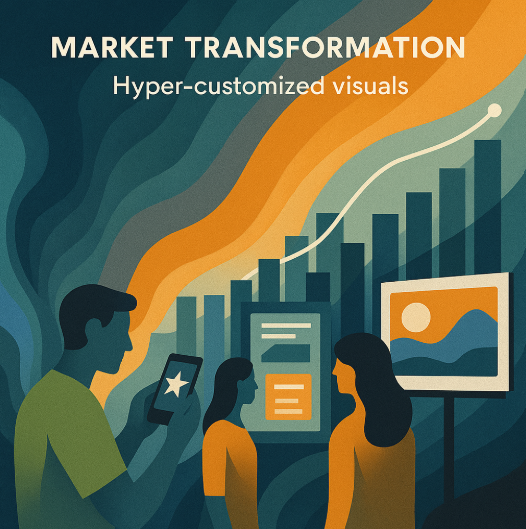
The ability to instantly generate custom campaign visuals tailored to micro-segments represents a sea change in marketing efficiency. Marketers can now produce hyper-localized billboards or email banners in various styles and test, learn, and adapt their visual approaches virtually overnight. This rapid iteration unlocks new possibilities for personalization at scale. A recent McKinsey survey revealed that the use of generative AI across organizations jumped from 55% in 2023 to 78% in 2024, with “respondents most often report using the technology in the IT and marketing and sales functions” (Forbes, 2025).
Real-world results demonstrate the impact: Michaels Stores implemented AI-driven personalization for their marketing campaigns, increasing their personalized email campaigns from 20% to 95%, which lifted click-through rates for SMS campaigns by 41% and email campaigns by 25% (McKinsey, 2023).
Narrative Visualization
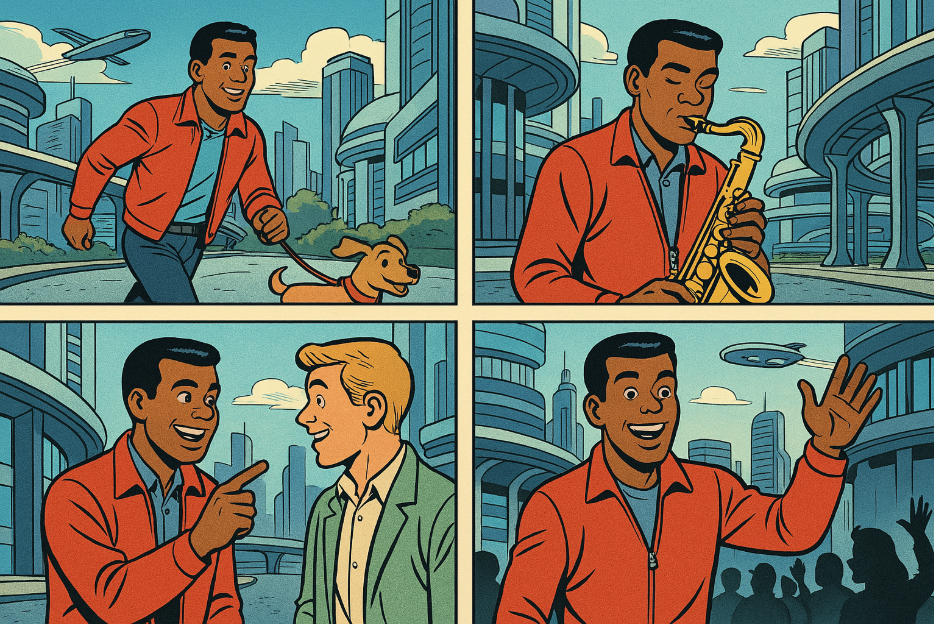
The technology empowers businesses to bring their narratives to life with frame-by-frame illustrations that previously would have required extensive resources and specialized talent. Brand stories and pitch decks can now leverage visual storytelling that creates more engaging and memorable communications. The ability to easily maintain character quality is a big deal for story telling.
Heritage Reimagined
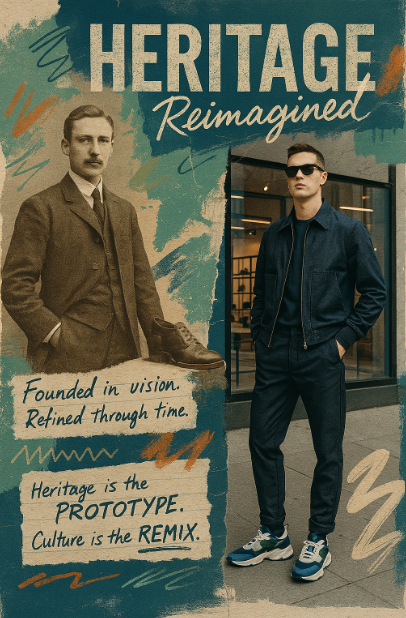
Perhaps most intriguing is the ability to breathe new life into legacy brand materials. Organizations can now reimagine their founder’s origin story with contemporary aesthetic quality, creating powerful connections between heritage and modern relevance. This application addresses a longstanding challenge in brand management: making historical narratives resonate with current audiences.
Advertising Efficiency
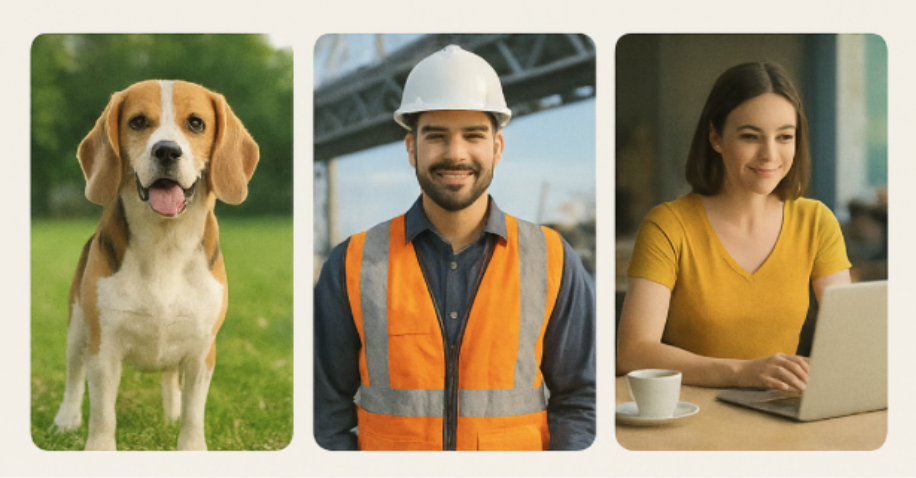
The technology enables in-house teams to mock up A/B test visuals that feel agency-quality without the studio overhead. Style transfer, character evolution, and entire campaign boards can be completed in minutes rather than weeks, dramatically compressing the creative development cycle and reducing production costs. According to Jasper’s 2025 State of AI in Marketing Report, “56% of marketers are using AI in isolated, ad-hoc ways, and 51% cannot track ROI or see the true business impact of their AI investments” (Forbes, 2025), suggesting significant untapped potential for organizations that implement more strategic approaches.
Balancing Innovation and Responsibility
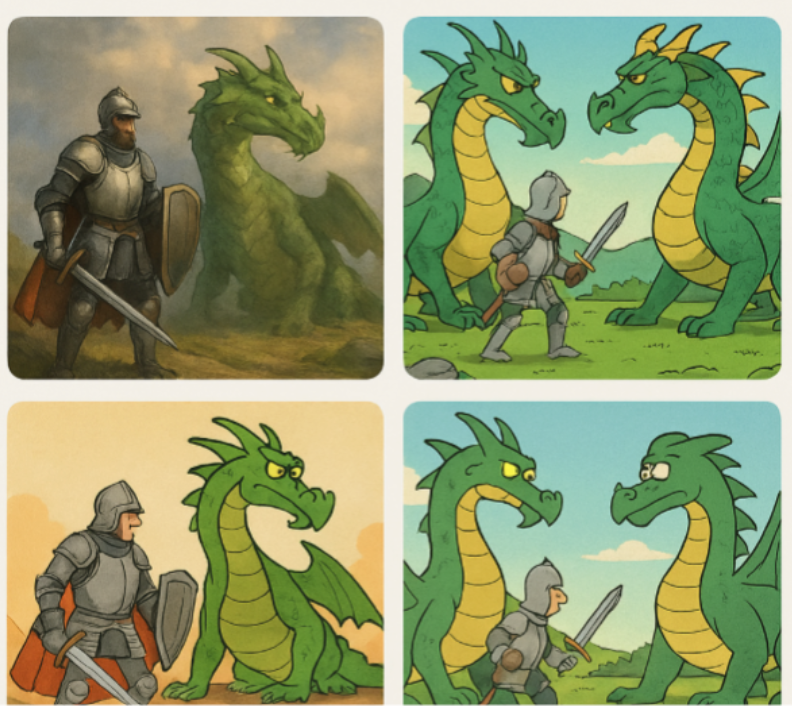
As with any powerful creative tool, GPT-4o’s image generation capabilities come with important ethical considerations. OpenAI has implemented policies to address concerns about artistic rights and style mimicry.
“We’re respecting of the artists’ rights in terms of how we do the output, and we have policies in place that prevent us from generating images that directly mimic any living artists’ work,” explains Brad Lightcap, COO at OpenAI. This approach aims to strike a balance between enabling creative expression and respecting intellectual property.
Sam Altman, CEO of OpenAI, articulates their philosophy: “What we’d like to aim for is that the tool doesn’t create offensive stuff unless you want it to, in which case within reason it does… we think putting this intellectual freedom and control in the hands of users is the right thing to do, but we will observe how it goes and listen to society.”
For business leaders, this balanced approach provides both creative freedom and ethical guardrails—essential considerations as organizations integrate these capabilities into their operations.
The Future of Visual Communication in Business
We’re witnessing a transition from text-to-image to idea-to-impact. The implications extend far beyond the tools themselves to fundamental questions about how we approach creative work and business communication.
Tech entrepreneur Balaji Srinivasan observes: “This changes filters. Instagram filters required custom code; now all you need are a few keywords like ‘Studio Ghibli’ or Dr. Seuss or South Park.”
This simplification of complex visual effects represents a broader transformation in how we conceptualize and execute creative work.
However, not all creative professionals see GPT-4o as an immediate replacement for specialized tools. Andrés Ordóñez, Global Chief Creative Officer at FCB, offers a more nuanced perspective: “It’s a big step forward in how seamlessly it integrates into the creative process, but [Midjourney] still leads the way in terms of visual craft.”
This suggests that different tools may serve different aspects of the creative process, with some excelling at workflow integration and others at artistic finesse.
James Dow, Generative AI Creative Director at The Brandtech Group, echoes this balanced view: “It will be another fantastic tool in the box, but it’s not a killer of anything… it’s not going to reinvent any existing workflows for me yet.” This perspective reminds us that technological tools, however advanced, still serve human creativity rather than replace it.
Strategic Implementation: From Capability to Competitive Advantage
For business leaders looking to translate GPT-4o’s image generation capabilities into tangible business value, consider these strategic implementation approaches:
- Cross-functional integration: Establish teams that pair creative direction with data analysis to maximize the strategic impact of rapid visual iteration.
- New ROI frameworks: Develop metrics that account for both cost reduction and revenue acceleration from improved visual communication.
- Visual experimentation culture: Create processes for systematic visual A/B testing that leverage GPT-4o’s speed to inform broader creative strategy.
- Responsible use guidelines: Develop clear policies for appropriate use cases, transparency about AI-generated content, and processes for reviewing outputs.
- Future-focused skill development: Invest in prompt engineering capabilities that will maximize output quality and consistency across your organization.
The Business Imperative of Creative Intelligence
As business leaders, we must recognize that GPT-4o’s image generation capabilities represent not just a new tool, but a fundamental shift in how we approach visual communication. The speed of execution is now creative advantage. Organizations that embrace this shift—integrating these capabilities into their workflows while maintaining strategic creative direction—will find themselves with unprecedented abilities to communicate, persuade, and connect.
The future belongs not to those who can operate the tools, but to those who can envision new possibilities for their use. As we merge human creativity with AI capabilities, we’re not just changing how we create images—we’re reimagining the very nature of visual communication in business.
The question is no longer “Can we create this?” but “What shall we create next?” And in that shift lies the true power of creative intelligence at scale.
What visual communication challenges could your organization solve with these new capabilities? How might you reimagine your approach to customer engagement through rapid visual experimentation?